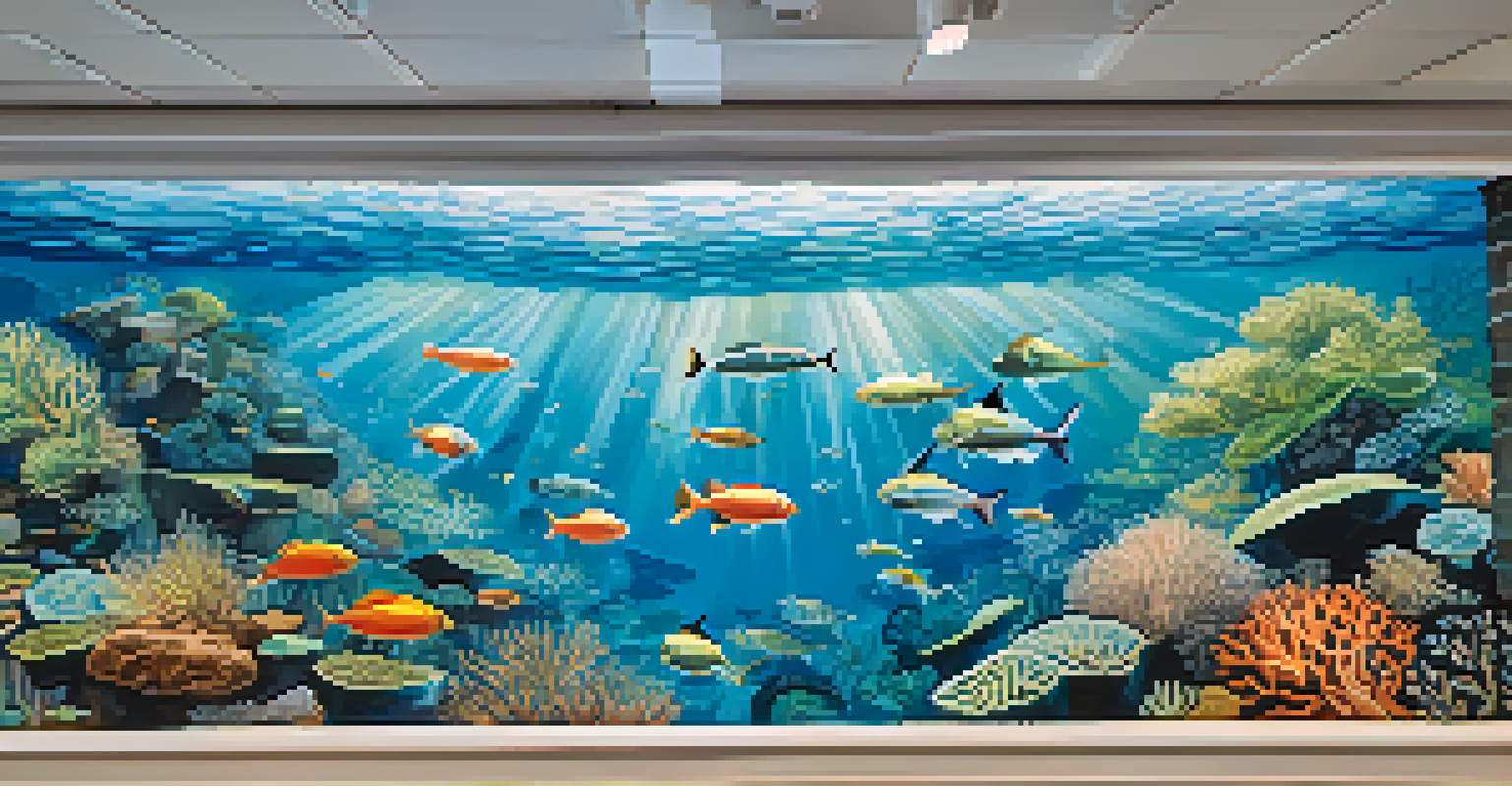The Process of Creating a Mural: Step-by-Step Overview

Understanding the Purpose of Your Mural
Before you start painting, it's essential to define the purpose of your mural. Are you aiming to beautify a space, convey a message, or celebrate local culture? Knowing the goal will guide your creative decisions and ensure the mural resonates with its intended audience.
Art is not what you see, but what you make others see.
Consider the location and demographic of the viewers. For instance, a mural in a children's playground might focus on whimsy and fun, while one in a corporate setting could reflect professionalism and innovation. This understanding will set the foundation for your concept.
Take a moment to visualize how your mural will interact with its surroundings. Will it complement the architecture, or stand out as a bold statement? This initial consideration is crucial as it shapes the overall design and impact of your mural.
Choosing the Right Location for Your Mural
The location of your mural can dramatically affect its visibility and effectiveness. Choose a spot that not only aligns with your mural's purpose but also attracts foot traffic. High-visibility areas like urban walls or community centers can enhance engagement.

Additionally, think about the surface material of your selected location. Different surfaces, such as brick, concrete, or wood, require varying types of paints and techniques. A smooth wall may allow for fine details, while a rough surface might give a more textured look.
Define Your Mural's Purpose
Understanding the goal of your mural is crucial for guiding your design and ensuring it resonates with viewers.
Lastly, consider any permissions or regulations that might be in place. Securing the proper approvals from property owners or local authorities is a vital step to avoid potential legal issues down the line.
Sketching Your Mural Design
Once you’ve defined your purpose and chosen a location, it’s time to sketch out your design. Start with rough drafts that capture your initial ideas, focusing on layout and composition. This stage is all about experimentation and creativity, so let your imagination flow.
The best way to predict the future is to create it.
Using digital tools or traditional methods like pencil and paper, create several iterations of your design. Don’t hesitate to seek feedback from friends or colleagues; fresh eyes can provide valuable insights and help refine your vision.
Once you settle on a final design, consider creating a scaled version to use as a reference on-site. This can be a simple grid system or a projection of your sketch, ensuring that proportions and details are accurate when you begin painting.
Gathering Supplies for Your Mural
Every great mural starts with the right supplies. Begin by selecting high-quality paints that are suitable for the surface and weather conditions. Acrylics are a popular choice for indoor murals, while exterior paints are ideal for outdoor projects due to their durability.
In addition to paints, you'll need tools like brushes, rollers, and possibly spray paint for larger areas or fine details. Don’t forget about protective gear such as gloves, masks, and safety goggles to ensure your painting experience is both safe and enjoyable.
Choose the Right Location
Selecting a high-traffic, suitable location enhances the visibility and impact of your mural.
It’s also important to gather materials for your setup, including ladders for reaching high spots and drop cloths to protect the surrounding area. Being well-prepared will make the entire process smoother and more efficient.
Preparing the Wall for Painting
Before diving into the painting process, take the time to prepare the wall. Start by cleaning the surface to remove any dirt, dust, or grease, which can affect paint adhesion. A clean wall is the canvas on which your masterpiece will flourish.
Next, assess the wall for any cracks or imperfections. Filling these in with a suitable filler will create a smooth surface for your mural. If you're working on a particularly rough wall, priming it can also help the paint adhere better and enhance vibrancy.
Finally, use painter’s tape to outline any areas you want to keep clean or to create sharp lines. This preparation ensures that when you start painting, you have a solid foundation to work from, allowing for cleaner, more professional results.
Painting Techniques for Your Mural
Now comes the fun part—painting your mural! Start with the larger sections of your design before moving on to the finer details. This method helps establish the overall composition and allows you to see how the colors interact.
Different techniques can add texture and depth to your mural. For example, sponging or stippling can create interesting patterns, while layering colors can enhance dimension. Don’t be afraid to experiment; sometimes the best discoveries happen by chance.
Focus on Preparation and Technique
Thoroughly preparing the wall and employing various painting techniques can significantly improve the final outcome of your mural.
As you work, step back frequently to assess your progress. This will allow you to see the mural from a distance and make necessary adjustments. Remember, patience is key—take your time to achieve the look you desire.
Final Touches and Preservation of Your Mural
Once the painting is complete, it’s time to add the final touches. This might include outlining certain elements to make them pop or adding highlights for depth. Small details can elevate your mural from good to truly stunning.
To ensure your mural stands the test of time, consider applying a protective sealant. This can shield your artwork from environmental factors, UV rays, and even graffiti. A good sealant will keep your colors vibrant and extend the life of your mural.

Finally, don’t forget to step back and admire your work! Celebrate your accomplishment, and consider sharing your mural on social media or local art platforms. You never know who might be inspired by your creativity!